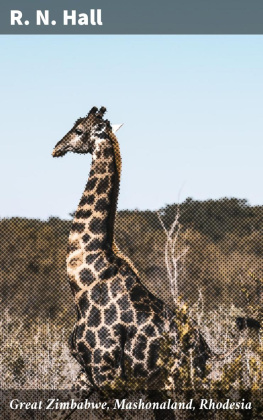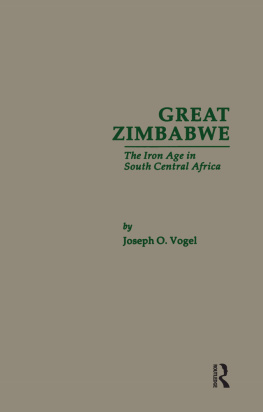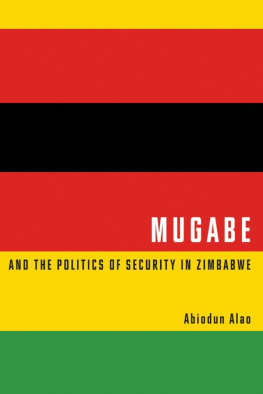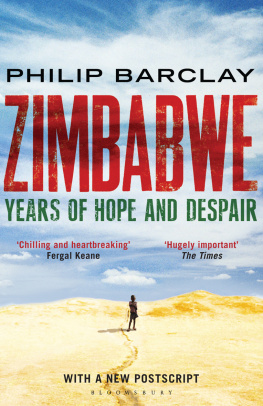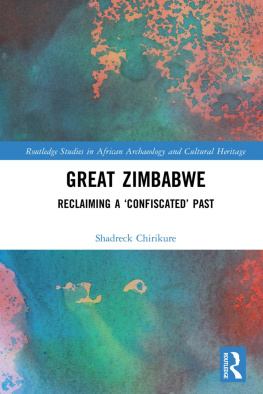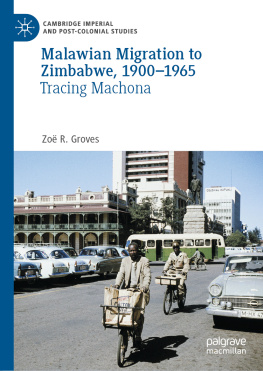For all Zimbabweans,
but especially in memory of
Theresa Chimhondo,
a mother deeply missed,
who I hardly knew,
but to whom I am greatly indebted.
THE SILENCE OF GREAT ZIMBABWE
The Silence of Great Zimbabwe
Contested Landscapes and the Power of Heritage
Joost Fontein
University College London Institute of Archaeology Publications, Vol. 37
First published 2009
by Left Coast Press, Inc.
First published by UCL Press in 2006.
Distributed by Left Coast Press, Inc. as of 2009.
Published 2016
by Routledge
2 Park Square, Milton Park, Abingdon, Oxon OX14 4RN
711 Third Avenue, New York, NY 10017, USA
Routledge is an imprint of the Taylor & Francis Group, an informa business
Copyright 2006 Joost Fontein
All rights reserved. No part of this book may be reprinted or reproduced or utilised in any form or by any electronic, mechanical, or other means, now known or hereafter invented, including photocopying and recording, or in any information storage or retrieval system, without permission in writing from the publishers.
Notice:
Product or corporate names may be trademarks or registered trademarks, and are used only for identification and explanation without intent to infringe.
Library of Congress Cataloguing-in-Publication Data available from the publisher
ISBN 978-1-59874-220-6 hardback
ISBN 978-1-59874-221-3 paperback
Contents
- AAEC Association of African Earth-keeping Churches
- AZTREC Association of Zimbabwean Traditional Ecologists
- BSACo British South Africa Company
- CID Central Investigations Department
- CIO Central Intelligence Organisation
- DA District Administrator
- ICOMOS International Council on Monuments and Sites
- IUCN The World Conservation Union
- MDC Movement for Democratic change
- NMMR National Museums and Monuments of Rhodesia
- NMMZ National Museums and Monuments of Zimbabwe
- ODA Overseas Development Authority
- PA Provincial Administrator
- SAREC Swedish Agency for Research Co-operation
- UNESCO United Nations Educational, Scientific and Cultural Organisation
- WHC World Heritage Centre
- ZANLA Zimbabwe African National Liberation Army
- ZANU PF Zimbabwe African National Union Patriotic Front
- ZAPU Zimbabwe African Peoples' Union
- ZBC Zimbabwe Broadcasting Corporation
- ZINATHA Zimbabwe National Traditional Healers Association
- ZIPRA Zimbabwe Peoples' Revolutionary Army
- ZIRRCOM Zimbabwe Institute of Religious Research and Ecological Conservation
- ZRP Zimbabwe Republic Police
There are many people to whom I owe a debt of gratitude. First of all I must acknowledge the financial support of the ESRC, the British Academy and the Munro Fund at the University of Edinburgh. Each provided funding at different times in the long process from initial proposal, through archival research and fieldwork to the writing, rewriting and publication of this book. The Carnegie Trust for the Universities of Scotland deserves special mention for their grant which has enabled the co-publication of this book in Zimbabwe by Weaver Press.
In 2000, as Chairman of the History Department at the University of Zimbabwe, Dr Innocent Pikirayi assisted me greatly by offering me a position as a Research Associate (2000-01). Beyond merely being instrumental for gaining permission to conduct research, this link with historians and archaeologists at the University of Zimbabwe proved very helpful as I got to grips with the impressive array of historical and archaeological work being carried out in Zimbabwe. Special thanks go to Gerald Mazarire who gave me numerous pointers to files at the National Archives, and off whom I frequently bounced ideas as they emerged from my research. I feel privileged to be able to call him my friend. Similarly I extend my gratitude to Terence Ranger, for inviting me as a fledgling postgraduate to present a paper at the A View of the Land' conference in Bulawayo in July 2000, for his support throughout my period of research in Zimbabwe and since, and for the memorable discussion we had about this study in October 2003.
The National Museums and Monuments of Zimbabwe (NMMZ) deserves special appreciation for their enthusiasm and support of this research. At NMMZ head office in Harare, both Dawson Munjeri, and Dr G. Mahachi made time available for remarkably frank and engaging interviews. In Masvingo, Edward Matenga provided access to NMMZ files, which had a great impact on my research. He also made time available for interviews and conversations, and a very informative and enjoyable tour of Great Zimbabwe one Sunday in June 2001. I got to know many members of the conservation team at Great Zimbabwe very well, and was constantly impressed by their openness and willingness to discuss. I hope that they will recognise that any critique of NMMZ contained in this book is made in the spirit of co-operation, and I hope they find my limited insights of some assistance for the course that NMMZ has embarked upon.
I should also acknowledge the help of members of the World Heritage Centre, UNESCO in Paris, with whom I worked as an intern in the spring of 1999. I am grateful for their intellectual engagement and encouragement during that time. In Harare, I am grateful to staff at the National Archives of Zimbabwe who were consistently helpful and provided every assistance I needed as I attempted to plough through the extensive archives they hold. I should also mention Ranche House College in Harare with whom I did an intensive Shona course during the early months after my arrival in Zimbabwe. Whilst I was in Harare I stayed with Mike Zimonte 'VaChedgelow' who has also become a close friend. When I first arrived in Zimbabwe he helped me get to grips with spoken and written Shona, and later he assisted me at the National Archives by going through many years of Zimbabwean newspapers.
My greatest debt must be to the communities around Great Zimbabwe among whom I carried out extensive fieldwork, particularly members of the Nemanwa, Charumbira and Mugabe clans whose perspectives on Great Zimbabwe were the focus of my research. Their co-operation, enthusiasm and hospitality was unrivalled, and a key to the success of this project. Whilst they were always keen to emphasise the correctness of their particular versions of the past, and their group or individual claims over Great Zimbabwe, it was always understood and accepted without question, that I was undertaking this research among all sides of the dispute. I only hope that I have done justice to their efforts to help me with this research, and that I have managed to present them in a sensitive and balanced light. They are far too numerous to mention all by name here, but the contributions of particular individuals are apparent throughout the book.
Sadly, since this book was written several of these people have passed away. They include Aiden Nemanwa, Chief Nemanwa, Chief Murinye, VaMututuvari, VaMhike and Eddison Zvobgo, among others. Given their general enthusiasm for this research it is particularly regrettable that they were unable to witness the published results. I hope I have done justice to their efforts.


